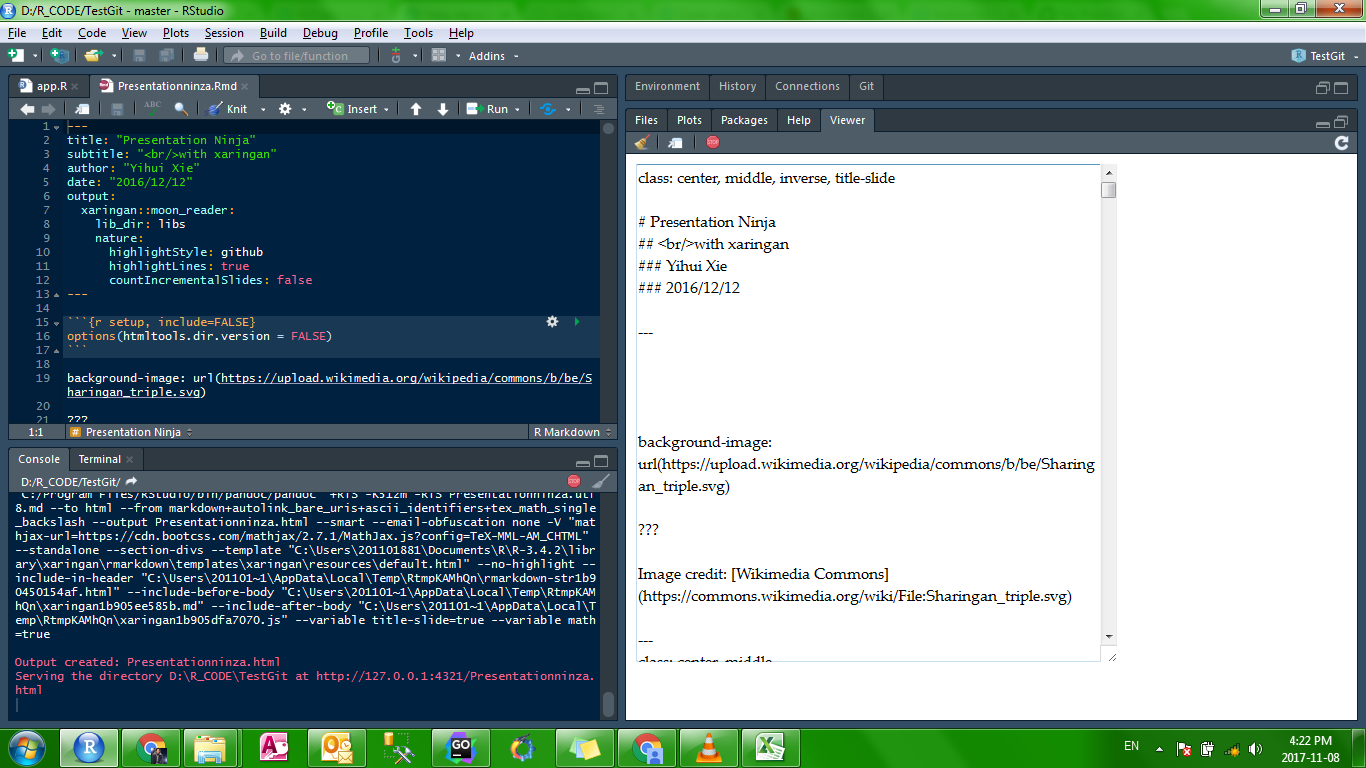
First, the function is document format agnostic – meaning it can work with LaTeX or Markdown documents. We are using include_graphics for two reasons. img1_path ) or using markdown directly ( !(imagepath)). The raw image on disk has a width of 1000px and height of 667px (300 dpi). Library(png) # For grabbing the dimensions of png files Start by loading the packages library(knitr) # For knitting document and include_graphics function For example library(jpeg) readJPEG(img1). NOTE: you can use the same process to examine jpegs, simply swap out png for jpeg.
#Insert image in rmarkdown full size#
In this post, we report image dimensions as they appear at full size on a computer monitor for reference. NOTE 2: Images in the final HTML documents are responsive – meaning that their dimensions may change with changes to the browser view size.
#Insert image in rmarkdown pdf#
NOTE 1: This post is focused on the production of HTML documents and some of our conclusions and recommendations may not apply if you're using R Markdown to create a LaTeX document, PDF or Word document. We assembled this blog post to help guide you through image processing decision-making as you construct your own R Markdown reports. R Markdown offers a wide range of functions and arguments for full control of image sizes but knowing how and when to use them can be daunting particularly given the differences in how external images are handled vs R-generated figures.


R Markdown reports that are heavy on graphs and maps, though, can yield large HTML files that are not optimized for web viewing. Writing reports in R Markdown allows you to skip painful and error-prone copy-paste in favor of dynamically-generated reports written in R and markdown that are easily reproducible and updateable.


 0 kommentar(er)
0 kommentar(er)
